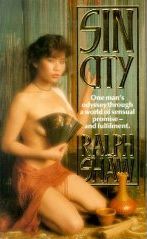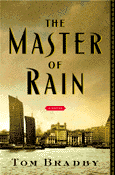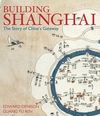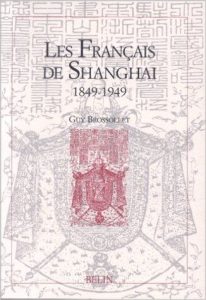I am not sure anymore where is the first time I heard about Ralph Shaw. It must have been about about 2006 when getting really interested in Old Shanghai. I heard the story of this ex-journalist from North China Daily News (the most important English Speaking newspaper in Shanghai and the whole of China) and tried to buy a copy of that book. Being not available in any English book store in China, I started to look on the internet. Sin City was displayed on several book sites but was listed as sold out. I finally got a second hand copy, not of the original publication of 1973, but a reprint in paperback from 1986.
I don’t think the book sold very well, certainly not helped by the cover of the paperback, sleazy and ugly, definitely not representative of the content. Since this book is in the bibliography of most books about Old Shanghai including the biography of Carl Crow I reviewed in a previous article, I was really interested about and really anxious to read it.
Sin City is the memoirs of Ralph Shaw, a Huddersfield (Yorkshire) boy who was sent to Shanghai as part of the UK military force. Incidentally, Huddersfield is the city where I spent nearly 3 years studying back in the UK. Shaw then became journalist then night editor of the North China Daily News, arriving in Shanghai in 1937 and leaving in 1949. Shaw was in his 20s in Shanghai and fully enjoyed all the pleasure that the city could offer in term of nightlife, drinking, partying and enjoying play with women. In Old Shanghai, like many men he found the perfect playground. His life during the period is depicted through a series of portraits, locations and actions. What is so interesting in this book is that he mentions all those people and all those places from the old Shanghai straight out of his memory.
Shaw arrived in Shanghai a few days before the invasion of the Chinese city by the Japanese forces and witnessed the mounting tensions between the British forces and the Japanese, until the invasion of the settlement in December 1941, his arrest the Japanese secret police and incarceration as a prisoner of war. There are many books about this period, but reading the actual experience of somebody who went through it is quite a unique experience.
Shaw does not stop at places and people, his memoirs also include a lot about the vices of the city, prostitution, gambling and corruption. He was definitely well informed and the light he casts on the city is less than flattering. Corruption, prostitution and alcoholism were normal practice for the most men in the foreign community in Shanghai and it reflects in the book. Once again, Shaw adds first hand details about places and people including portraits and funny anecdotes. The book is really good to take the reader in the Old Shanghai, into the smoky girly bars and opium dents. With cross referencing with other books, the picture of Old Shanghai really gets together while reading it.
What is more questionable and probably less interesting for most reader is the display of his own sexual performance. Although it adds colours to the story, it also takes it away from the plot and take off some of the book’s credibility. Some pages of Sin City would easily find there place in men-only literature. This is where most readers probably get lost. The erotic pages clearly dominated the cover and marketing of the book though they are not that many. It’s a pity such a narrow approach was taken for a book that is so full of first hand details about the old Shanghai.
Another great book written by an eye witness of Shanghai in the same period is John Pal’s Shanghai Saga. For more information about the Old Shanghai underworld, Paul French’s “City of devils” is a sure bet.



